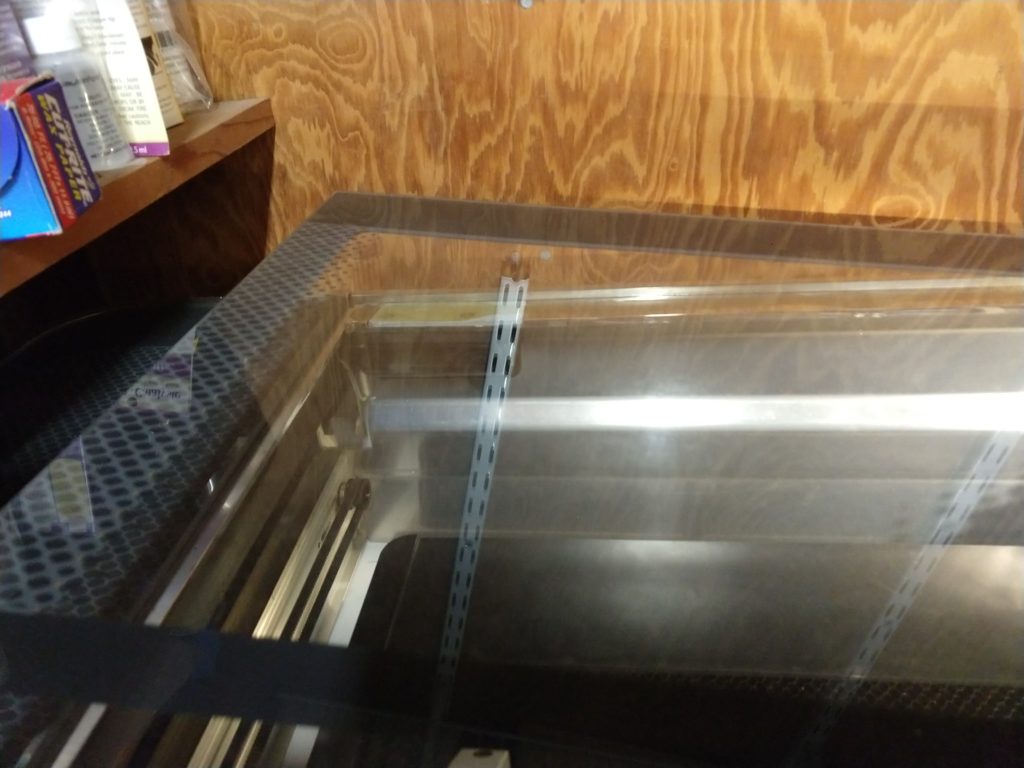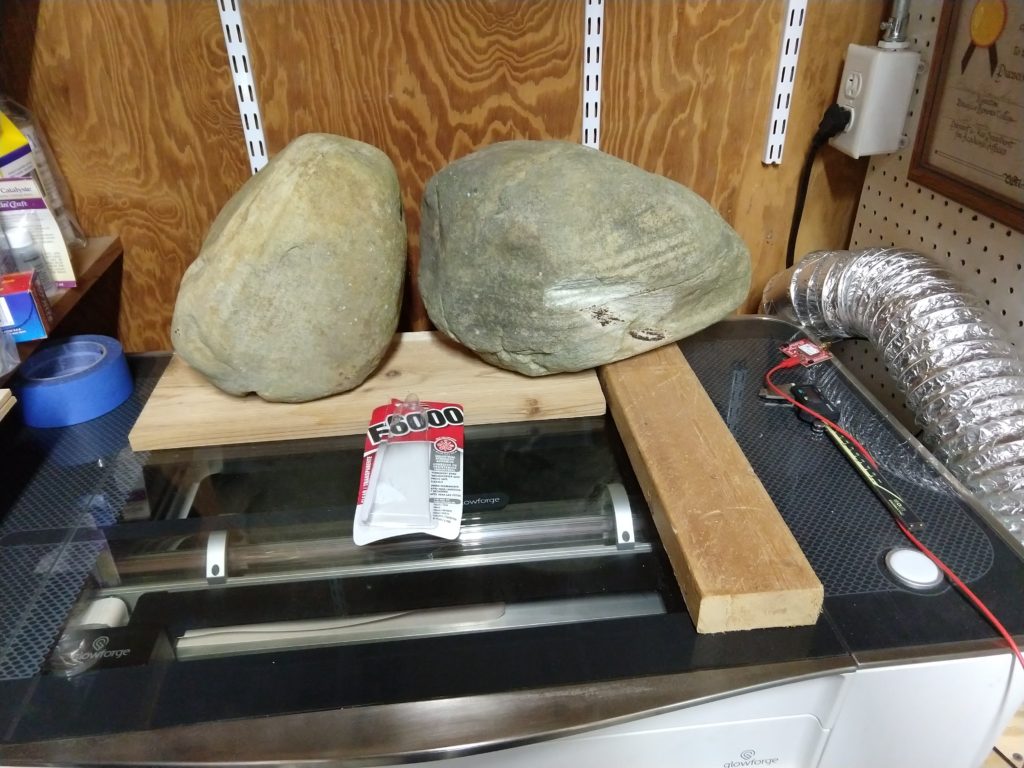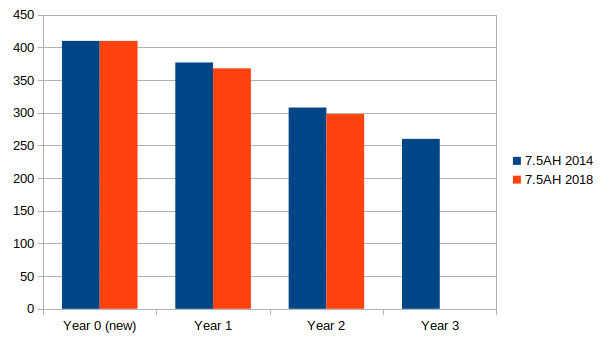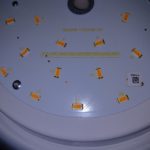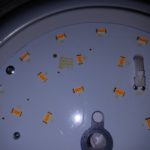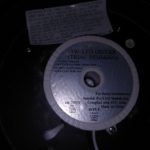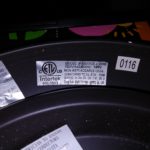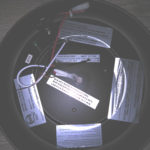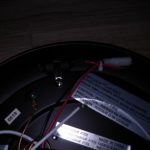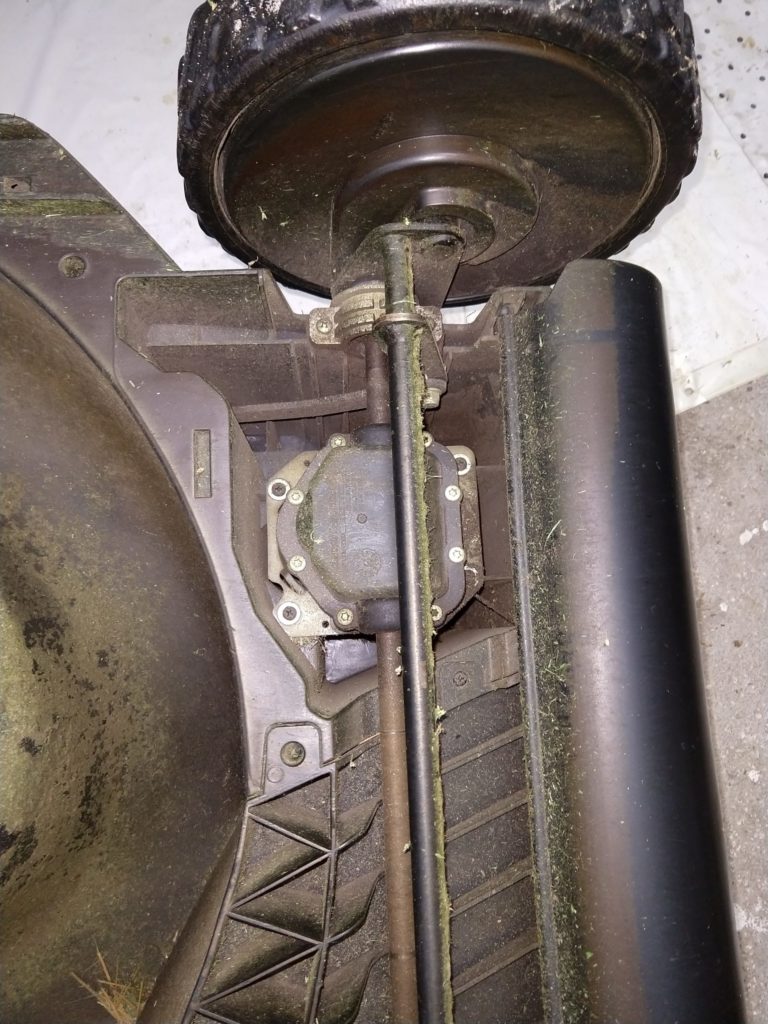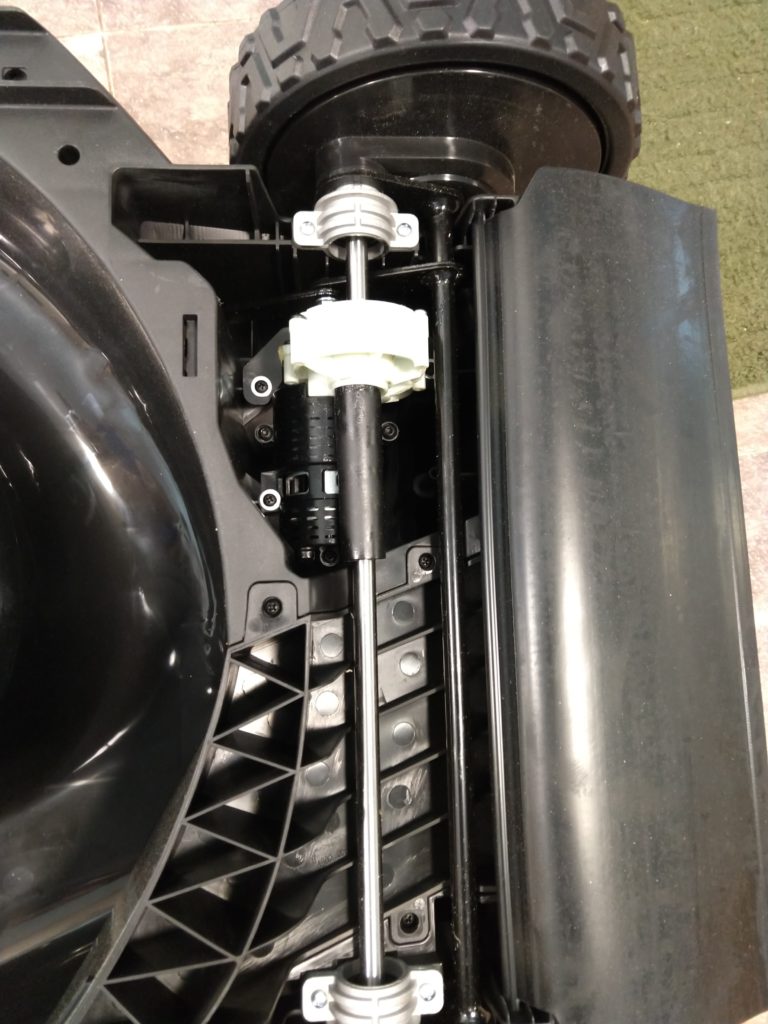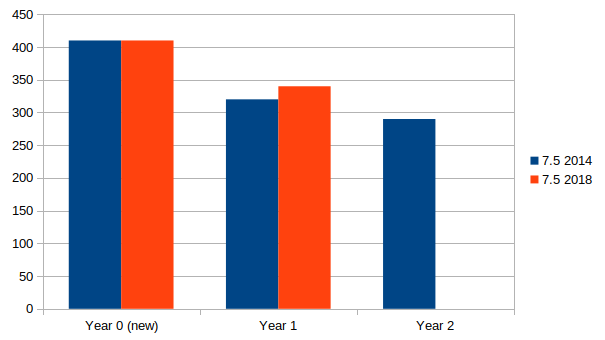I’ve been having an issue with the USPS Click & Ship account where it would not allow me to pay for shipping labels online. Everything would work fine up until I tried to pay, and then it would give me the “Sorry, your transaction has been declined. Your transaction cannot be processed at this time with this payment type” error message. It only took USPS a week to resolve it.
Continue reading
Category Archives: Reviews
My Glowforge Glass Lid Detached!
Remember how the handle on the front of my Glowforge’s glass lid fell off back in 2019? Well today when I went to lift the lid, the entire glass lid was detached from the back (hinges!). I am NOT impressed with the adhesive that Glowforge used on this unit.
Last time I was able to simply epoxy the handle back into place. I’m hopeful I can do the same thing for the back of the lid, but unfortunately this time it will be very important that I be able to get the lid as close to possible to the original position, as the calibration of the under-lid camera may be negatively impacted by any offsets. On the plus side, since my last issue, Glowforge has introduced a “beta” Calibrate Camera feature which should hopefully give me the ability to re-calibrate the under-lid (wide angle) camera “in the field”.
Somebody on the Glowforge community forums suggested that they had used E6000 (a flexible adhesive) to repair their lid, so I decided to give that a shot. I made this choice based mostly on the fact that E6000 is a single part adhesive that comes in a squeeze tube with a nice nozzle for dispensing. Getting a good bead between the lid and the hinge mechanism was going to be a little tricky because the lid is still attached to the main unit by a flexible circuit board/wire and it wasn’t immediately clear how to detach the connector. (I was worried that getting 2-part epoxy between the two of them without spilling any would be difficult. In retrospect, I should have ordered one of those “mix in the nozzle” dispensers for the epoxy….).
So, I laid down a few beads of E6000 and then clamped the lid down onto the hinges for 48 hours.
When I opened the lid, the E6000 mostly held, but there was a noticeable “glue stretching” sound, and the right hand side of the lid (nearest the flexible wire, and hardest to get the nozzle under) detached. The E6000 was holding the lid on the hinge in an upright orientation, but I didn’t want to risk closing and opening the lid more.
So I ended up using JB Weld Clear 2 part 5 minute epoxy all along the edge of the lid and the hinge mechanism (using a toothpick to push it down in the gap on the right hand side) and then clamping the lid to the hinge in an upright position (using a real clamp this time) for another 24 hours.
The Epoxy is currently holding the lid onto the hinge very solidly. I’d feel better if I’d used epoxy between the entire lid and hinge mechanism, instead of just the edge and what I could force down the crack on the right hand side, so I’ll be gentle with the lid (but then again, I’ve been gentle with it ever since the handle fell off….)
I’m hopeful the bond will remain at least as permanent as my repair on the handle has so far.
Update: My laser tube gave up the ghost, and GlowForge exchanged my (well out of warranty) unit for a Refurbished one for $500. (Yes, they were informed about my lid repair activities with Epoxy and approved the exchange anyways…..)
Technical, Hardware, Electronics & Surplus suppliers with fast shipping times to Florida
Here is a list of suppliers located close to or in Florida, for fast shipping times:
- Industrial Safety Products – Miami FL – Personal Protective Equipment.
- MPJA.com – West Palm Beach FL – Surplus & Closeout electronics, motors, chemicals & tools.
- Raka.com – Epoxy Resins, Fiberglass and other composite supplies.
- McMaster Carr – fast shipping to just about anywhere, but PHEW those prices….
- MonsterBolts – (I haven’t tried them yet, but the next time I need some fasteners I’m going to check to see if they are cheaper than McMaster…..)
Other useful suppliers located farther away:
- All Electronics – California – Like MPJA, but with an even wider selection.
- American Science & Surplus – Chicago, IL – A more random selection including a lots of crafts, outdoors, optics, novelty, etc…
EGO 7.5AH Battery degradation over time (3 year mark)
I log how much power it takes to charge my Ego batteries after I use them. I’m using this as a stand-in for how much capacity they retain over time. You should know that I have a large lawn (in Florida) and cycle these batteries at least once a week (more in the summer) so these batteries are getting more of a workout than if you had a small city lot that you could mow a few times before charging the battery.
I have two 7.5 AH batteries (one bought before the other). They took 410 watt hours to recharge when new. My older battery has three years of use, and has 63% of it’s original capacity (260 w/h). The drop from year 2 to year 3 was from 75->63% [The batteries have a 3 year warranty, so the first battery is now out of warranty.]
My second battery appears to be following the same general trajectory, although it’s capacity is just slightly less than the first battery (at the same years in service mark).
For the bar chart above I averaged the capacity of all measurements in a particular year, but if you graph all measurements you can see that they are generally decreasing over time (although the batteries do sometimes go “up” in capacity, possibly due to ambient temperatures). The following graph is for my 2nd 7.5AH battery (manufacture date of 2018).
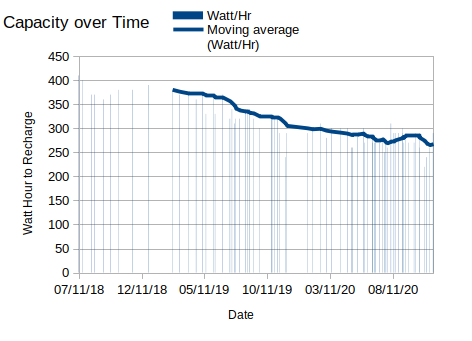
High Accuracy GPS with RTK in Orlando
Global Navigation Satellite Systems (GNSS) receivers have made incredible improvements over the last twenty years. I remember having to stand outside for 10 minutes waiting for a US only Global Positioning System (GPS) receiver to lock onto 4 satellites so that I could get a fix with less than 100m accuracy (due to selective availability). Now, you can buy a $220 GNSS receiver that can track 60 satellite channels simultaneously, start from cold in 25 seconds, lock into signals from satellites launched by four different countries (the USA, Russia, European Union, and China) and gets 2.5 to 5 meter accuracy all on it’s own without correction signals.
Here is a plot of the calculated location for a stationary antenna over time without correction signals (3D fix mode):

As you can see, all of the readings are within a 1 meter circle of accuracy, which is quite good for finding your location on earth, but not (quite) accurate enough to drive a robotic lawnmower around and miss the petunias. [And from day to day you may be off by a few more meters…]
Continue reading
How Harley Quinn: Birds of Prey could have been so much better.
My wife and I went to see Harley Quinn: Birds of Prey for Valentines day. And yes, it was at least 50% her idea. The movie wasn’t bad, and had several good moments, but it could have been so much better.
My wife appreciated “the girls” kicking a lot of male ass, but several of the fight scenes went on for too long with too much gratuitous gruesome violence. (Maybe not as bad as the Myth Busters diving suit episode, but did Harley Quinn really need to break a bad guy’s leg in three different places with three different hits?) The bad guys were sick and gruesome as well, which served as their only character development and justification for getting their asses kicked.
The best parts of the movie—where they didn’t take themselves too seriously and embraced the camp without actually putting “Bam” and “Pow!” on-screen — almost rose to the level of Tim Burton’s Batman. Quirks like the ode to the breakfast sandwich, stealing a mini-van as a getaway vehicle, Huntress being socially awkward, or one-liners such as “Hair-band?” shone like lighthouses in the fog, indicating where the movie could have gotten things so much better. Some of the action shots were amazing: Glitter Bomb bean-bag riot gun attack on the police station, baseball bat floor bounce, the fun-house fight scene, and the roller skate car chase. But many of them wore out their welcome and went on too long and over the top with violence.
I understand that the source material is dark, gritty and violent, but really, who has actually read those comics? Forget the canon, and pander to the crowds. Make it fun and campy, go for a PG-13 rating, and develop the other characters a bit more. Margot Robbie does a great job with Harley Quinn, but the other actresses didn’t have enough to work with. As my wife said, “It’s no Wonder Woman”.
Project Source 11″ LED Integrated Light Failure (Flashing) IPX8011LS-ORB
Two and a half years ago I purchased a 2 pack of LED integrated lights for my house from Lowes. They were the IPX8011LS-ORB units, and cost $50 for the two pack. Recently, the electronics in one failed such that the light would flash on and off quickly (2-4 times a second) instead of saying lit continuously once the electronics puck heated up. Here are some photos of the old/bad unit (click to enlarge).
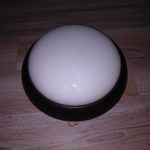
Some of the model numbers I found in the old unit: C041218 (18W LED Driver Triac dimming) BG0358-110C036-03 (on the circuit board) HH-03 94V0 E327405 4515 (also on the circuit board.
Luckily, it came with a 3 year warranty and I was able to find my receipt, so I took it to Lowes and they replaced it with one that looked exactly the same on the outside, but had a different item number on the box and a completely different set of electronics on the inside. Photos of the new unit, which has worked fine so far:
Serial/Model numbers/markings I found on the new unit: 41056, F11-1L L.MAC6-1430-L021-00, KF-FAND-S008-V00 2019.01.07 1400LM (1400 Lumen?), Intertek 4008733,
DONGGUAN KEE TAT LIGHTING LTD.
UPDATE: March 2022, the 2nd (original) unit from the (original) 2 pack failed in the same way (out of warranty). I replaced it with an inexpensive fixture that takes replaceable (LED) bulbs. [The replacement unit from the 2019 failure is still working fine…]
Ego 21″ mower (LM2100SP) 3rd self propel motor failure & repair report
My Ego 21″ self propelled electric lawnmower started on its third self propel unit failure back in June of 2019. For those keeping track, I bought the Ego 21″ mower back in April 2017, and it’s self propel unit failed in October of 2017 I took it to Home Depot to be repaired (which took 6 weeks) and the repaired self propel unit lasted until July of 2018. Ego customer support was nice enough to send out a replacement mower that time, so my downtime was only 10-15 days, and I was hopeful that the replacement mower might have a better self propel unit in it. Unfortunately, that one started to fail in June of 2019, so it looks like the lifespan of my self propel units are 4 months, 10 months and 11-16 months.
So, back in June 2019, the self propel unit just stopped working much like it had previously. I called Ego customer support and they offered to ship me a replacement mower. We had that all set up, but the next day I went out to push-mow the rest of my lawn, and lo-and-behold, the self propel unit had “reset” and was working again! So I called Ego back and canceled the replacement. Unfortunately, although the self propel unit had not totally failed, it had not fully recovered, and still had some issues that got gradually worse over time. Specifically, the top speed was reduced, and over the next several months, the power and top speed appeared to keep dropping. Eventually it got to a point where it would not propel the mower up a slight hill without me assisting. Eventually, in January of 2020, the self propel unit failed completely, and did not “reset” itself.
Ego shipped me a replacement mower and I shipped the bad mower (my 2nd) to them, so I am now on my 3rd Ego mower (and year 3 of my 5 year warranty). However, for the first time in 3 self-propel failures the SP unit is different! The new mower (manufacture date October 2019) has a different style of self propel unit when compared to the three units that had failed on it in the past. The old unit had a gearbox on the drive shaft and the motor body stuck upwards at a 90 degree angle. The new unit has the motor body above but parallel (horizontal) to the drive shaft. I don’t know if the old unit had a fan, but the new unit has a fan clearly visible.
Objectively, the new self propel drive unit doesn’t look as impressive as the older unit, but given the number of failures I have had with the old style, I’m excited to have something change (and hopefully improve). From a performance standpoint, the new self propel unit works just as well as the old style, so there is no loss in performance. I just hope that it will have more longevity than the older units.
I suspect that the size of my yard (which is large enough that it takes me two 7.5 AH batteries to mow it in the fall/winter, and up to four 7.5 AH battery charges in the heat of summer) may be the reason the self propel unit’s are failing. I suspect I’m putting a lot more “miles” on the SP unit than most Ego owners, plus they seem to be failing in the heat of the summer. I’m not sure if that is due to heat related problems, or if it’s due to the grass growing more in the summer.
Ego Battery degradation over time (2 year mark)
I’ve been tracking how much power it takes to charge my Ego batteries since I purchased them. I’m using this as a stand in for how much capacity they retain over time. You should know that I have a large lawn (in Florida) and cycle these batteries at least once a week (more in the summer) so these batteries are getting more of a workout than if you had a small city lot that you could mow a few times before charging the battery.
I have two 7.5 AH batteries (one bought before the other). They took 410 watt hours to recharge when new. After one year of usage, the remaining capacity was (78% 320 w/h and 82% 340 w/h) on the two batteries. My older battery has two years of use, and has 70% of it’s original capacity (290 w/h). So it looks like they drop between 18 and 22% of their capacity the first year, and an additional 8% the 2nd year for a total loss of 30% of their capacity after the 2nd year of usage. [The batteries have a 3 year warranty.]
Update: See my new post at the 3 year mark for the 2014 battery (and 2 year mark for the 2018 battery).
Alpicool C15 12 volt car fridge / freezer review
I bought an Alpicool C15 model compressor/refrigerant based car refrigerator/freezer for a project. They also have a C20 model which is exactly the same but has a “bump up” in the lid for 20 liters of capacity. I paid $145 with a coupon, and I’ve seen them retail around $190. Here is my Amazon Affiliate link: https://amzn.to/2rwJvD2
Quick summary of the review video above: 15L interior capacity, can get the interior down to at least -12C, chills four 12oz cans to 3.5C in 4.5 hours, freezes 2 lbs of water in 12 hours, draws up to 50 watts continuous when the compressor is running (never goes above 150 watts on startup so can be ran by my Ego Nexus Escape). It averages 13 watts draw over a 24 hour period at 0 deg C without opening the lid (310 watt/hrs in a day). When set to -20 deg C it draws an average of 25.4 watts per hour (610 watt/hrs in a day).
The amount of insulation is relatively minimal (especially if you are using it as a freezer) but the internal volume / total surface area is small enough that it really doesn’t take up that much power as a refrigerator. Its all plastic construction and friction fit lid is cheap (reflecting the price I paid) but serviceable. My unit was damaged in shipping and had some plastic break off the side, but still functioned fine. As I plan on voiding the warranty and most of the exterior case in my project, I didn’t mind, but a normal customer would have shipped it back to Amazon for a replacement.
Video on how to use the control panel (including converting the display to Fahrenheit) is here:
